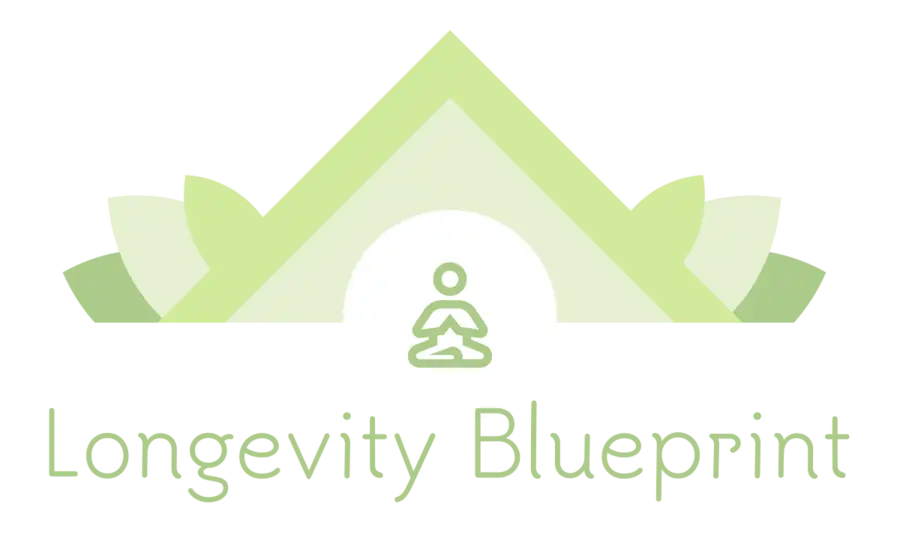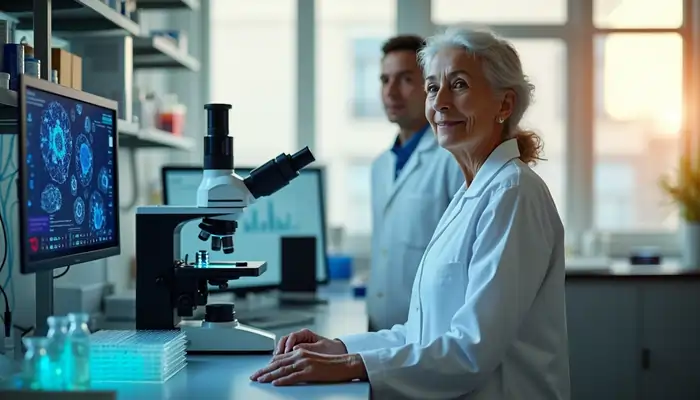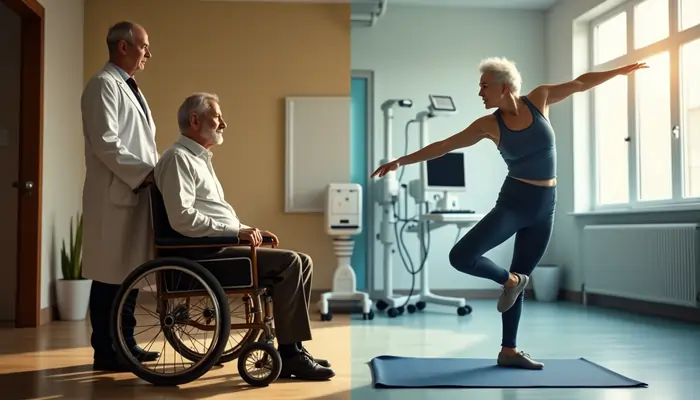The Science of Living Longer: What Research Actually Says About Longevity Health
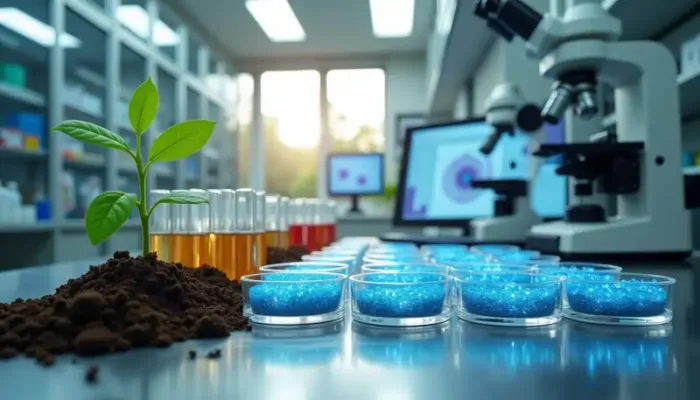
Life expectancy has changed dramatically in the last century. Since 1900, average life expectancy worldwide has more than doubled from 32 years to 71 years. Women now live an average of 73.8 years while men average 69.1 years. Scientific research points to humans potentially living between 120 and 150 years.
The longevity industry has caught everyone’s attention lately. Venture capital funding exceeded $1 billion by 2020, and two dozen life-extending drugs are now in human trials. The news gets better – genetics only influence about 25% of our lifespan. We control the remaining 75% through our lifestyle choices and environmental factors.
This piece will break down the latest scientific breakthroughs in aging research. You’ll learn about the difference between extending lifespan and healthspan, and get practical ways to track and improve your biological age. We’ll also get into why some populations live longer and how you can use these lessons in your own life.
The Science of Aging
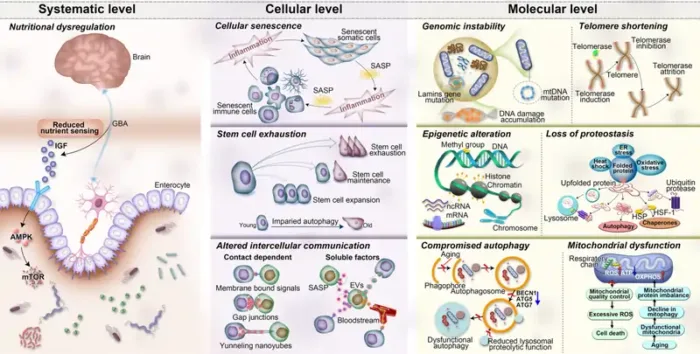
Image Source: Nature
Scientists have started to decode specific patterns of aging at the cellular level. The aging process affects everyone differently. Some people show signs of physiological deterioration in their 70s, while others stay independent and vital well into their later years [1]. Learning about these mechanisms gives us a chance to extend not just our lifespan but our healthspan—the time we spend in good health.
This section covers:
- Cellular aging mechanisms explained
- Understanding telomeres and their role in aging
- Key biomarkers to track your biological age
Cellular aging mechanisms explained
The body’s systems gradually decline as cells lose their function over time. Cellular damage builds up, including DNA lesions, mutations, and misfolded proteins that harm how cells and organelles work [2]. These tiny changes lead to the visible signs of aging we can see.
Cellular senescence stands out as one of aging’s most important mechanisms. Senescent cells stop dividing permanently but stay metabolically active. Rather than dying, these cells build up throughout our lives and release inflammatory factors known as the senescence-associated secretory phenotype (SASP) [3]. The SASP contains various inflammatory markers like interleukins (IL-6, IL-7, IL-8, and IL-15), chemokines (CCL3, CCL4), and growth factors (GDF-15 and activin A) [1].
These factors trigger cellular senescence:
Genomic instability – DNA damage accumulates and disrupts gene expression, which hurts cellular function [4]
Oxidative stress – The body loses balance between reactive oxygen species (ROS) production and antioxidant defenses, which damages cellular components, especially DNA [5]
Mitochondrial dysfunction – Mitochondria become less efficient, producing less energy and more harmful byproducts [6]
Epigenetic alterations – DNA methylation patterns change and affect gene expression as time passes [4]
Denham Harman first proposed the “Free Radical Theory of Aging” in 1956. The theory suggests that free radicals cause cellular damage that accumulates over time and leads to aging [7]. These reactive molecules, especially ROS, damage cellular macromolecules, with DNA being most vulnerable. Research shows stress releases glucocorticoid hormones that reduce antioxidant proteins, which might speed up telomere shortening and cellular aging [5].
Understanding telomeres and their role in aging
Telomeres are among the most studied aspects of cellular aging. These protective DNA-protein structures sit at chromosome ends and prevent genomic instability. The repetitive sequences (TTAGGG in humans) work like biological clocks for cellular aging [8].
Each time cells divide, telomeres get shorter by about 50-200 base pairs. This happens because of the “end replication problem”—DNA polymerase can’t fully replicate chromosome ends [3]. Oxidative damage and other end-processing events we don’t fully understand also make telomeres shorter [8]. Humans lose about 24.8–27.7 base pairs each year [5].
Critically short telomeres trigger a DNA damage response that activates cell-cycle checkpoint genes including p53, p21, and p16. This leads cells to either become senescent or die through apoptosis (programmed cell death) [8]. Scientists have learned that even just a few very short telomeres can trigger this response [3].
Research has revealed some fascinating facts about telomeres:
- Women’s telomeres are usually longer than men’s, matching their lower biological age [1]
- People with short telomeres face higher mortality risk, as shown by a large study of 64,637 individuals [1]
- Short telomeres increase the risk of coronary heart disease, according to research covering 43,725 participants [1]
- People with Alzheimer’s disease have shorter telomeres based on both observational and causal studies [1]
Telomerase, a special enzyme, can fight telomere shortening by adding DNA sequence repeats to chromosome ends. Yet most body cells have little or no telomerase activity—it’s mainly found in stem cells and certain progenitor cells [7]. This limitation serves a purpose by preventing unlimited cell replication that could cause cancer. About 85-90% of malignant tumors show active telomerase [8].
The sort of thing I love comes from research on long-lived species. Naked mole rats, which live exceptionally long lives for their size, show mild telomere lengthening with age instead of shortening [7]. These animals have unique variations in telomerase genes that might help explain their remarkable longevity [7].
Key biomarkers to track your biological age
Your chronological age tells just part of the story. Biological age—how much your body has deteriorated—is often nowhere near your calendar age. The American Federation for Aging Research (AFAR) says ideal aging biomarkers should predict aging rates better than chronological age, track basic aging processes rather than diseases, allow repeated testing without harm, and work in both humans and lab animals [1].
Scientists have found several promising biological age markers:
The nine-biomarker panel has become particularly useful to measure biological age. This panel predicts 10-year survival with 90% accuracy and shows how well cardiovascular, liver, kidney, immune, and metabolic systems work [1]. The biomarkers include:
- Albumin
- Creatinine
- Glucose
- C-reactive protein
- Lymphocyte percent
- Mean cell volume
- Red cell distribution width
- Alkaline phosphatase
- White blood cell count
Multiple studies confirm these calculations work. Each year of increased biological age raises all-cause mortality risk by 8% and cardiovascular mortality by 20% [1]. A 10-year biological age increase associates with 51% higher mortality risk in people with coronary artery disease [1].
Epigenetic clocks measure age through DNA methylation patterns. Several versions exist, including Horvath, Hannum, PhenoAge, and GrimAge clocks [9]. Studies show these clocks can predict aging-related outcomes and mortality risk beyond chronological age [3]. Second-generation clocks like GrimAge (based on mortality data) work better than first-generation ones (based only on chronological age) to show frailty and predict mortality [3].
Metabolomic biomarkers offer another promising approach. Measures like MetaboAge (based on chronological age) and MetaboHealth (based on mortality) strongly associate with aging outcomes [3].
Research suggests epigenetic, metabolomic, and clinical biological age markers each capture different aspects of aging. This means using multiple approaches might give us the full picture of biological age [3].
Longevity vs. Life Expectancy
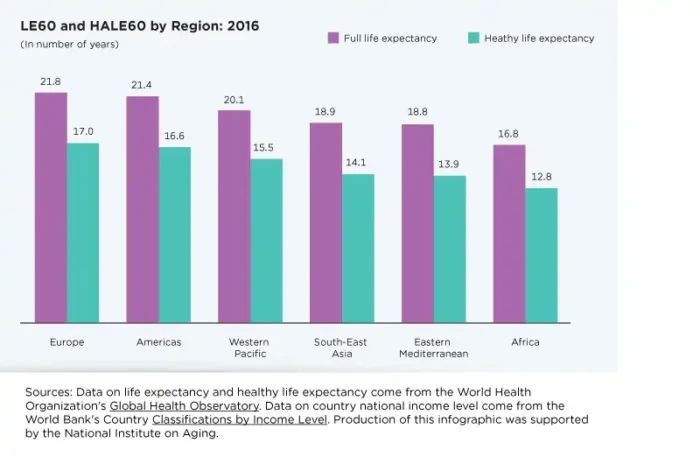
Image Source: U.S. Census Bureau
Living beyond 100 years isn’t about luck. You need to understand the basic difference between just existing longer and thriving through your later years. Scientists now know the difference between mere survival and genuine vitality as we age.
In this section:
- What’s the difference between living longer and living healthier
- Global blue zones and their common characteristics
- Genetic factors in longevity and what you can control
What’s the difference between living longer and living healthier
People often mix up life expectancy and longevity, but these represent two different concepts. Life expectancy is a statistical average—the number of years you might live based on your birth year, current age, and various demographic factors [2]. Population-wide averages determine this number, which factors in infant mortality and accident rates that don’t really affect your personal longevity potential.
Living beyond your demographic’s average life expectancy defines longevity [10]. Quality of life and lifespan both matter here [10]. Modern medicine has created an interesting challenge: humans live longer than ever, but the gap between lifespan and healthy living keeps growing [10].
This brings us to “healthspan”—the time when your body’s systems work at their best, supporting physical activity, mental clarity, and emotional wellbeing [10]. A Harvard study revealed that people who picked up healthy habits at age 50 lived 14 years longer than those who didn’t. These habits included avoiding smoking, exercising regularly, eating well, drinking moderately, and maintaining a healthy weight [11]. Women who followed four or five of these habits enjoyed 34 more disease-free years compared to 24 years for those who followed none [11]. Men showed similar results: 31 years versus 24 years of healthy living [11].
The real goal isn’t just living longer—it’s staying healthy longer. Those extra years should be vibrant and active, not limited by disability or disease. One researcher put it perfectly: “People in blue zones don’t think about health programs or diets. They just live their lives” [8].
Global blue zones and their common characteristics
Five special regions around the world, called “Blue Zones,” fascinate scientists because of their high number of centenarians. These zones include Sardinia’s Barbagia region, Greece’s Ikaria, Costa Rica’s Nicoya Peninsula, California’s Loma Linda (where Seventh Day Adventists live), and Japan’s Okinawa [12].
Each blue zone has its unique culture, but researchers found nine common factors in these long-living communities:
Plant-dominant diet – Complex carbohydrates from whole plant-based foods make up 90% of what people eat in blue zones [8]. They eat meat about five times monthly [1]. Beans add four extra years to life expectancy [8].
Natural movement – Daily life includes physical activity through gardening, walking, and household chores instead of gym workouts [1]. Sardinian men’s longevity links to farming, living on mountain slopes, and walking long distances to work [1].
Life purpose – A clear sense of purpose leads to better sleep, healthier weight, more activity, and less inflammation [11]. Okinawans call this “ikigai” while Nicoyans say “plan de vida” [1].
Stress management – Blue zone residents handle stress through prayer, naps, or sharing wine with family [13].
Moderate caloric intake – Okinawans follow “hara hachi bu”—eating until they’re 80% full [1]. Most blue zone people practice some form of fasting [13].
Moderate alcohol consumption – Sardinians and Ikarians enjoy one to two glasses of antioxidant-rich red wine daily [1].
Faith and spirituality – Religious participation runs deep in these communities [13]. Religious people tend to live longer, possibly due to social support and lower depression rates [1].
Family focus – Extended families live together in blue zones [13]. Research shows grandparents who care for grandchildren often live longer [1].
Social connectedness – Strong social networks, known as “moai” in Okinawa, offer emotional support and encourage healthy living [1]. Nicoya Peninsula’s tight-knit community helps people live seven years longer than average Americans [8].
Genetic factors in longevity and what you can control
Genes play their part in longevity, but lifestyle matters more. The Danish Twin Study shows genes determine 20-25% of lifespan while lifestyle and environment influence 75-80% [4][6].
Centenarians’ close relatives have some advantages. Their children develop age-related diseases later than others [6]. Their siblings live longer and develop conditions like high blood pressure, heart disease, cancer, or type 2 diabetes later than most people [6].
Scientists have found several genes linked to longevity:
APOE gene shows the strongest connection to longevity [14]. Some variants affect Alzheimer’s risk and heart health. The e4 variant shortens life by about 4.2 years [7] while e2 supports exceptional longevity [7].
FOXO3A consistently appears in longevity studies [14].
Sirtuin (SIRT) genes, especially SIRT1, control cell cycle, energy use, and gene expression [7]. Higher SIRT2 and SIRT6 levels help various organisms live longer [7].
Lifestyle choices shape our first 70-80 years more than genetics [6]. Even people with genetic risks can live healthier longer through better habits and environment.
Blue zones teach us that health-promoting environments matter more than willpower. People spend 90% of their time within 5 miles of home—their “Life Radius” [4]. Making healthy choices the easy choice works better than relying on individual responsibility [4].
Resource Links:
- National Institute on Aging: https://www.nia.nih.gov/health/what-do-we-know-about-healthy-aging
- Blue Zones Project: https://www.bluezones.com/
- WHO Global Health Observatory: https://www.who.int/data/gho/data/themes/mortality-and-global-health-estimates
Modern Longevity Research
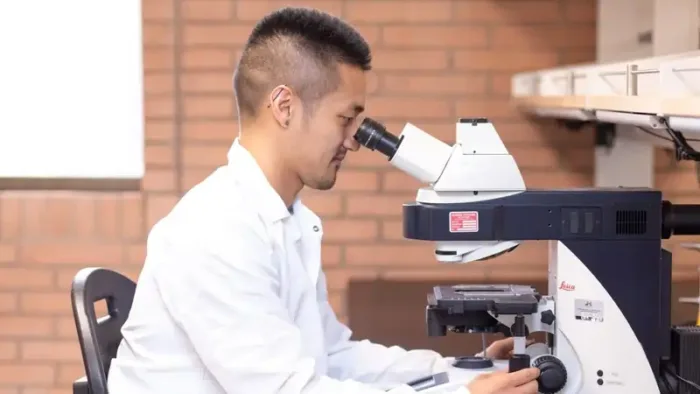
Image Source: The USC Leonard Davis School of Gerontology
Scientists have made incredible progress in understanding why we age and what we can do about it. Research has evolved from theory to promising interventions that could extend both our lifespan and healthspan.
In this section:
- Latest scientific breakthroughs in longevity science
- Leading researchers and their contributions
- How to apply research findings to your daily life
Latest scientific breakthroughs in longevity science
Scientists have made several promising discoveries in their quest to slow or reverse aging. The University of Texas MD Anderson Cancer Center’s research team has identified a molecule that restores telomerase reverse transcriptase (TERT) levels, which naturally drop as we age. This treatment has shown remarkable results in preclinical models – reducing cellular senescence, lowering tissue inflammation, and improving memory and neuromuscular function [5].
Scientists are also developing “senolytics” – compounds that target and eliminate senescent cells. These “zombie cells” build up over time and release inflammatory substances that lead to disease. Removing these cells has shown improvements in various age-related conditions [15].
Other notable breakthroughs include:
- Hyperbaric oxygen therapy shows promise in supporting neurogenesis, extending telomeres, and reducing senescent cells [16]
- Machine learning techniques help identify blood proteins that predict organ-specific aging [17]
- Research shows that monthly removal of inflammatory cells in middle-aged mice added 9% to their lifespan (about 79 days) while they stayed strong and mobile until late in life [18]
Leading researchers and their contributions
Several brilliant minds are leading longevity research. Harvard Medical School’s David Sinclair has pioneered work on sirtuins – protein-modifying enzymes that respond to NAD+ levels and caloric restriction. His team discovered NAD+ biosynthesis in lifespan regulation and developed the Information Theory of Aging. This theory suggests that aging happens when cells lose their identity through epigenetic changes – a process that might be reversible [19].
Ronald DePinho’s team at MD Anderson Cancer Center has made groundbreaking discoveries about TERT and telomere biology. They’ve shown that bringing TERT levels back to youthful states can reprogram gene expression related to learning, memory, muscle performance, and inflammation [5].
The field’s core team includes:
- Sofiya Milman at Albert Einstein College of Medicine studies “super-agers” who live healthily past 95 to find genetic factors that could lead to new treatments [20]
- Shai Efrati at Tel Aviv University works on hyperbaric medicine that could address age-related oxygen deficiency [16]
- Stephen Schimpff identified seven evidence-based “keys” to healthy aging in his book Longevity Decoded [9]
How to apply research findings to your daily life
While innovative treatments are still in development, research consistently shows that certain lifestyle changes can extend your healthspan. Physical activity remains “the closest thing to a fountain of youth that we know of” [3]. Your lifestyle choices, not genetics, determine 75% of your lifespan [21].
Research-backed strategies for longevity include:
- Eat mostly plant-based foods rich in cell-protecting antioxidants [21]
- Try time-restricted eating or calorie restriction – even a modest 12.5% reduction shows benefits [3]
- Get quality sleep (7-9 hours each night) to reduce chronic health condition risks [21]
- Stay social – studies of 28,000 people link regular social activity with longer survival [21]
- Keep a positive outlook – optimism associates with longer lifespan in people of all backgrounds [21]
Resource Links:
- National Institute on Aging: https://www.nia.nih.gov/news/topics/longevity
- American Federation for Aging Research: https://www.afar.org/top-breakthroughs-in-aging
- Harvard Health: https://www.health.harvard.edu/staying-healthy/longevity-lifestyle-strategies-for-living-a-healthy-long-life
Measuring Your Longevity Progress
Your body’s true age goes beyond counting birthdays. Modern longevity science gives us real ways to measure biological age – the actual age of your body compared to your calendar years.
In this section:
- At-home tests to track biological age
- Professional testing options and what they mean
- Creating a personal longevity dashboard
At-home tests to track biological age
You can now track your aging progress from home with biological age tests. DNA methylation pattern tests stand out as reliable aging indicators. Elysium Health’s kits analyze methylation throughout your genome. These tests show your biological age, aging rate, and the biological age of nine body systems including brain, heart, and immune function [22].
GlycanAge offers a different approach. Their test measures chronic inflammation by looking at sugar molecules attached to immune system proteins. Results come back in about three weeks [23].
Simple physical tests can estimate biological age too:
- The sit-rise test scores you up to 10 points based on how well you sit and stand without support
- Standing on one leg with eyes closed tests your balance
- Push-up capacity links to heart health
- Your waist-to-height ratio shows metabolic health [10]
Professional testing options and what they mean
Medical tests give you a deeper look at aging markers. A complete assessment should include:
Blood sugar management plays a vital role in longevity health. Doctors use fasting insulin and hemoglobin A1C tests to check this [24]. Heart health screening through arterial imaging helps spot early signs of atherosclerosis [24].
Advanced tests like VO2 max show how well your body uses oxygen during exercise. This test remains the best measure of heart and lung fitness [24]. DEXA scans accurately measure muscle mass and visceral fat – both crucial signs of healthy aging [24].
Creating a personal longevity dashboard
A dashboard that tracks multiple biomarkers shows your aging journey clearly. Platforms like Heads Up Health let you combine data from wearables, lab tests, and health apps in one place [25].
Your dashboard should track:
- Key metabolic markers (glucose, lipids, inflammation)
- Physical performance (strength, cardio fitness)
- Sleep quality
- Stress and recovery (HRV)
Regular monitoring helps you see which lifestyle changes actually affect your aging process. This beats relying on gut feelings alone.
Resource Links:
- National Institute on Aging: https://www.nia.nih.gov/health/what-do-we-know-about-healthy-aging
- American Federation for Aging Research: https://www.afar.org/biomarkers-of-aging
Conclusion
Science has changed how we view aging. It’s no longer just an unavoidable decline – we can actually influence this process. Research into cellular mechanisms, blue zones, and innovative interventions shows that our lifestyle choices affect 75% of our potential lifespan.
Research clearly shows steps that anyone can take. Your body responds well to regular exercise, plant-based foods, good stress management, and strong friendships. These habits can boost your chances of living longer. On top of that, you can track your biological age through biomarkers to measure your progress and adjust your habits.
Scientists keep finding promising new ways to live longer. They’ve discovered methods to tackle cellular aging by preserving telomeres, removing senescent cells, and reprogramming epigenetics. These advances hint at exciting possibilities to extend both how long and how well we live.
You don’t need to wait for future treatments to live a longer, healthier life. Blue zones research proves that simple daily choices make a difference. Walking more, eating mostly plants, staying connected with friends, and having a sense of purpose can add quality years to your life. The science of longevity isn’t just about living longer – it’s about living better throughout your entire life.
Resource Links:
- National Institute on Aging: https://www.nia.nih.gov/health/what-do-we-know-about-healthy-aging
- Harvard Health: https://www.health.harvard.edu/topics/aging
- American Federation for Aging Research: https://www.afar.org/
FAQs
What are the most scientifically-backed ways to increase longevity?
Regular physical activity, a predominantly plant-based diet, stress management techniques, and maintaining strong social connections are among the most well-supported strategies for extending lifespan and healthspan. Research also suggests that moderate calorie restriction and intermittent fasting may have longevity benefits.
How much of our lifespan is determined by genetics versus lifestyle?
Studies indicate that approximately 20-25% of lifespan variation is attributed to genetics, while the remaining 75-80% is influenced by lifestyle and environmental factors. This means that even individuals with genetic predispositions to certain diseases can significantly impact their longevity through healthy lifestyle choices.
What are “blue zones” and what can we learn from them?
Blue zones are regions with unusually high concentrations of centenarians. Common characteristics among these areas include plant-dominant diets, natural physical activity, strong social connections, and a sense of life purpose. These findings suggest that creating environments that support healthy choices is crucial for promoting longevity.
How can I measure my biological age?
Several methods exist to estimate biological age, including epigenetic tests that measure DNA methylation patterns, biomarker panels that assess various physiological indicators, and even simple physical assessments like the sit-rise test. Professional options like VO2 max testing and DEXA scans can provide more detailed insights into specific aspects of aging.
What are some promising areas of longevity research?
Current research focuses on interventions that target fundamental aging processes, such as senolytics to remove senescent cells, telomere preservation techniques, and epigenetic reprogramming. Additionally, studies on “super-agers” and the development of personalized anti-aging treatments based on individual genetic and metabolic profiles are advancing our understanding of longevity.
References
[1] – https://www.healthline.com/nutrition/blue-zones
[2] – https://integrishealth.org/resources/on-your-health/2016/may/life-expectancy-what-you-can-control
[3] – https://www.nih.gov/news-events/nih-research-matters/research-context-can-we-slow-aging
[4] – https://pmc.ncbi.nlm.nih.gov/articles/PMC6125071/
[5] – https://scitechdaily.com/longevity-breakthrough-new-treatment-reverses-multiple-hallmarks-of-aging/
[6] – https://medlineplus.gov/genetics/understanding/traits/longevity/
[7] – https://pmc.ncbi.nlm.nih.gov/articles/PMC8836117/
[8] – https://www.npr.org/sections/health-shots/2023/09/09/1198047149/blue-zones-health-centenarians-healthy-habits
[9] – https://medicine.yale.edu/news/yale-medicine-magazine/article/longevity-decoded-the-seven-keys-to-healthy-aging/
[10] – https://blueprint.bryanjohnson.com/blogs/news/measure-your-bioage-at-home?srsltid=AfmBOool0C2FlfJ3-jzSOGe3lGp0YwzWsuWx9RAZxOvM0YgjDb5Jc7vD
[11] – https://nutritionsource.hsph.harvard.edu/healthy-longevity/
[12] – https://www.bluezones.com/2016/11/power-9/
[13] – https://www.news-medical.net/health/Unlocking-the-Secrets-of-Blue-Zones-A-Blueprint-for-Longevity-and-Health.aspx
[14] – https://pmc.ncbi.nlm.nih.gov/articles/PMC9145989/
[15] – https://www.theblood.io/blog/the-future-of-aging-breakthroughs-in-longevity-science-and-technology
[16] – https://pmc.ncbi.nlm.nih.gov/articles/PMC11286550/
[17] – https://www.timeline.com/blog/the-future-of-longevity-medicine-breakthroughs-from-2024?srsltid=AfmBOop35aESNOtKpGMavD3_R0lin3zdR_8pdzNKKKUcFrJevm47CjT-
[18] – https://scitechdaily.com/longevity-breakthrough-new-treatment-extends-lifespan-and-enhances-physical-function/
[19] – https://sinclair.hms.harvard.edu/people/david-sinclair
[20] – https://www.businessinsider.com/longevity-doctor-superagers-shares-anti-aging-secrets-2025-3
[21] – https://www.health.harvard.edu/staying-healthy/longevity-lifestyle-strategies-for-living-a-healthy-long-life
[22] – https://www.elysiumhealth.com/products/index?srsltid=AfmBOorOGe-_wKFStyqFnlRukx15mXxSqzWkY2bMqN7X4dhhU8MZ2-9_
[23] – https://glycanage.com/
[24] – https://www.healthspanmd.com/blog/10-essential-longevity-tests-your-doctor-isn-t-doing
[25] – https://headsuphealth.com/longevity-dashboard/
